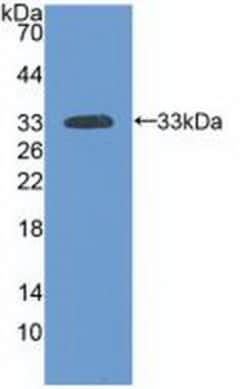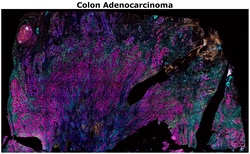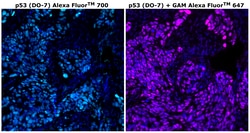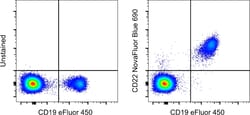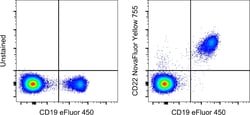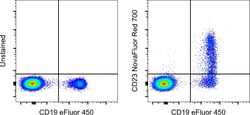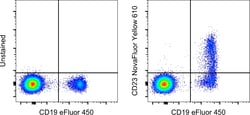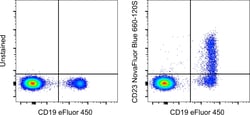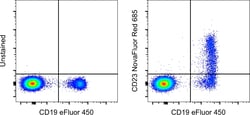
Primary Antibodies
Primary antibodies are immunoglobulins that recognize and bind to a specific antigen of interest with high affinity and specificity to purify, detect, and measure that antigen. Includes antibody pairs for specific biochemical applications.

All Primary Antibodies
(146,676)

Primary Antibody Matched Pairs
(33)

Protein Interaction Antibody Pairs
(5)

Protein Phosphorylation Antibody Pairs
(1)
Filtered Search Results
Products from some of our suppliers do not display in filtered search results. Please
clear all filters
to see these products.
1
–
15
of
133,466
results
| Content And Storage | Store at 4°C short term. For long term storage, store at -20°C, avoiding freeze/thaw cycles. |
|---|---|
| Target Species | Human,Pig |
| Host Species | Rabbit |
| Conjugate | Unconjugated |
| Applications | ELISA,Immunohistochemistry (Paraffin),Western Blot,Immunocytochemistry |
| Form | Liquid |
| Gene Accession No. | Q16787 |
| Concentration | 0.5 mg/mL |
| Antigen | Laminin alpha-3 |
| Gene Symbols | LAMA3 |
| Regulatory Status | RUO |
| Purification Method | Protein A |
| Gene Alias | [a]3B; BM600; BM600 150kD subunit; E170; Epiligrin; Epiligrin 170 kDa subunit; epiligrin alpha 3 subunit; epiligrin subunit alpha; kalinin 165kD subunit; kalinin subunit alpha; LAM3, alpha-3 subunit; Lama3; Lama3B; laminin 5 alpha 3; laminin 5, alpha-3 subunit; laminin A3; laminin subunit alpha 3; laminin subunit alpha-3; laminin, alpha 3; laminin, alpha 3 (nicein (150kD), kalinin (165kD), BM600 (150kD), epilegrin); Laminin-5; laminin-5 alpha 3 chain; laminin-5 subunit alpha; Laminin-6 subunit alpha; laminin-7 subunit alpha; LAMNA; LOCS; nicein 150kD subunit; nicein subunit alpha; nicein, 150kDa |
| Gene | LAMA3 |
| Product Type | Antibody |
| Gene ID (Entrez) | 100511642, 3909 |
| Formulation | PBS with 50% glycerol and 0.05% ProClin 300; pH 7.4 |
| Immunogen | Recombinant Laminin Alpha 3 (LAMa3) (Gln47-Leu296). |
| Classification | Polyclonal |
| Primary or Secondary | Primary |
Invitrogen™ Myogenin Recombinant Rabbit Monoclonal Antibody (JE60-39)
Rabbit Recombinant Monoclonal Antibody
| Content And Storage | Store at 4°C short term. For long term storage, store at -20°C, avoiding freeze/thaw cycles. |
|---|---|
| Target Species | Human,Mouse,Rat |
| Host Species | Rabbit |
| Conjugate | Unconjugated |
| Applications | Western Blot,Immunocytochemistry |
| Form | Liquid |
| Gene Accession No. | P12979, P15173, P20428 |
| Isotype | IgG |
| Concentration | 1 mg/mL |
| Antigen | Myogenin |
| Gene Symbols | MYOG |
| Regulatory Status | RUO |
| Purification Method | Protein A |
| Gene Alias | bHLHc3; Class C basic helix-loop-helix protein 3; MYF4; Myf-4; myo; MYOD1-related protein; MYOG; Myogenic factor 4; Myogenic factor-4; myogenin; myogenin (myogenic factor 4) |
| Gene | MYOG |
| Product Type | Antibody |
| Gene ID (Entrez) | 17928, 29148, 4656 |
| Formulation | TBS with 0.05% BSA, 40% glycerol and 0.05% sodium azide; pH 7.4 |
| Immunogen | Synthetic peptide within human myogenin aa 1-50/224. |
| Classification | Recombinant Monoclonal |
| Primary or Secondary | Primary |
| Clone | JE60-39 |
Invitrogen™ SARS Coronavirus Spike Protein Polyclonal Antibody
 Greener Choice
Greener Choice
Offers one or more environmental benefits itemized in the U.S. FTC “Green Guides.”
Learn More

Greener Choice
Offers one or more environmental benefits itemized in the U.S. FTC “Green Guides.”
Learn More
Offers one or more environmental benefits itemized in the U.S. FTC “Green Guides.”
Learn More
Rabbit Polyclonal Antibody
| Content And Storage | Store at 4°C short term. For long term storage, store at -20°C, avoiding freeze/thaw cycles. |
|---|---|
| Target Species | Virus |
| Host Species | Rabbit |
| Conjugate | Unconjugated |
| Applications | Western Blot |
| Form | Liquid |
| Isotype | IgG |
| Concentration | 1.0 mg/mL |
| Antigen | SARS Coronavirus Spike Protein |
| Regulatory Status | RUO |
| Purification Method | Antigen affinity chromatography |
| Gene Alias | Coronavirus; COVID; Covid 19; COVID19; COVID-19; SARS; SARS Coronavirus; SARS CoV; SARS CoV2; SARS CoV-2; SARS Spike Protein; SARS-CoV2; SARS-CoV-2 |
| Product Type | Antibody |
| Formulation | PBS with 0.02% sodium azide |
| Immunogen | Synthetic peptide corresponding to amino acids 1124-1140 from the S (Spike glycoprotein) (Spike protein S2') for the Human SARS coronavirus. |
| Classification | Polyclonal |
| Primary or Secondary | Primary |
Invitrogen™ Pan Cytokeratin Monoclonal Antibody (AE1/AE3), Alexa Fluor™ 700
Mouse Monoclonal Antibody
| Content And Storage | 4°C, store in dark, DO NOT FREEZE! |
|---|---|
| Target Species | Human |
| Host Species | Mouse |
| Conjugate | Alexa Fluor 700 |
| Applications | Immunohistochemistry (Paraffin),Multiplex Immunohistochemistry |
| Form | Liquid |
| Gene Accession No. | P02533, P02538, P04264, P05783, P05787, P08727, P08729, P08779, P12035, P13645, P13646, P13647, P19012, P19013, P35908, Q01546, Q04695, Q7Z794 |
| Isotype | IgG1 |
| Concentration | 0.2 mg/mL |
| Antigen | Pan Cytokeratin |
| Gene Symbols | KRT1, KRT10, KRT13, KRT14, KRT15, KRT16, KRT17, KRT18, KRT19, KRT2, KRT3, KRT4, KRT5, Krt6a, KRT7, KRT76, KRT77, KRT8 |
| Regulatory Status | RUO |
| Purification Method | Affinity chromatography |
| Gene Alias | 2310016L08Rik; 3300001P10Rik; 39.1; 40-kDa keratin intermediate filament; 47 kDa cytokeratin; 56 kDa cytokeratin; 57kd keratin; 57kDa keratin; 58 kDa cytokeratin; 60-kDa keratin; 63kDa Keratin; 65 kDa cytokeratin; 67 kDa cytokeratin; AA960620; adult keratin; AI324768; AI528832; AI626930; AI663979; AL022697; alpha keratin; AU019895; AW108092; AW146334; basic epidermal type II cytokeratin (carboxy-terminal region, clone pUF164); BB005427; BCIE; BIE; Card2; cell proliferation-inducing gene 46 protein; CK 2e; CK1; CK-1; CK10; CK-10; CK13; CK-13; CK14; CK-14; CK15; CK-15; CK16; CK-16; CK-17; CK18; CK-18; CK19; CK-19; CK-1B; CK-2e; CK3; CK-3; CK4; CK-4; CK5; CK-5; ck55; CK6A; CK-6A; CK6C; CK-6C; CK6D; CK-6D; CK-6E; CK7; CK-7; CK8; CK-8; CYK18; CYK4; CYK8; CYKER; cytokeratin 1; cytokeratin 10; cytokeratin 13; cytokeratin 14; cytokeratin 15; cytokeratin 16; cytokeratin 18; cytokeratin 19; cytokeratin 3; cytokeratin 4; cytokeratin 5; cytokeratin 6A; cytokeratin 6C; cytokeratin 6D; cytokeratin 7; cytokeratin 8; cytokeratin 8 (370 AA); cytokeratin endo A; Cytokeratin endo B; cytokeratin otokeratin; cytokeratin type II; cytokeratin type II, component Ib/c; cytokeratin type II, component III; cytokeratin VIB; cytokeratin VII; cytokeratin-1; Cytokeratin-10; cytokeratin-13; Cytokeratin-14; cytokeratin-15; Cytokeratin-16; cytokeratin-17; Cytokeratin-18; cytokeratin-19; Cytokeratin-1B; Cytokeratin-2e; cytokeratin-3; Cytokeratin-4; cytokeratin-5; Cytokeratin-6A; cytokeratin-6B; cytokeratin-6C; Cytokeratin-6D; cytokeratin-6E; cytokeratin-7; Cytokeratin-8; cytokeratin-A; Cytoskeletal 57 kDa keratin; D130054E02Rik; D15Wsu77e; DDD; DDD1; ear specific cytokeratin; EBS2; ebs3; ebs4; EGK_03684; EGK_03685; EHK; EHK1; Endo B; EndoA; EndoC; epidermal keratin 10; epidermal keratin VII; epidermolysis bullosa simplex 2 Dowling-Meara/Kobner/Weber-Cockayne types; epidermolysis bullosa simplex, Dowling-Meara, Koebner; epidermolytic hyperkeratosis 1; epidermolytic hyperkeratosis; keratosis palmaris et plantaris; epithelial keratin 1; epithelial keratin 10; epithelial keratin 2e; Epithelial keratin-1; Epithelial keratin-2e; EPPK; fgk; fin and gill keratin; FNEPPK; focal non-epidermolytic palmoplantar keratoderma; GK-19; Hair alpha protein; HMWCK; Hom s 5; I79_019823; I79_021074; I79_023185; I79_024335; intermediate filament protein; K1; K10; K13; K14; K15; K16; K17; K18; K19; K1B; K1C1; K1CO; K1CP; K1CS; K2C7; K2C8; K2e; K3; K3 keratin; K4; K5; K6A; K6a keratin; K6C; K6D; K7; K77; K8; Ka10; Ka13; Ka14; Ka15; Ka16; Ka17; Ka19; kamp-keratin derived antimicrobial peptide; Kb1; Kb2; Kb4; Kb7; KDAMP; KER1; Ker10; Ker2; KERA; keratin; keratin 1; keratin 1 (epidermolytic hyperkeratosis); keratin 1, type II; keratin 10; keratin 10 (epidermolytic hyperkeratosis); keratin 10 (epidermolytic hyperkeratosis; keratosis palmaris et plantaris); keratin 10, type I; keratin 10, type I L homeolog; keratin 10, type I S homeolog; keratin 12, gene 2 S homeolog; keratin 13; keratin 13, type I; keratin 13, type I S homeolog; keratin 14; keratin 14 (epidermolysis bullosa simplex, Dowling-Meara, Koebner); keratin 14, type I; keratin 14, type I L homeolog; keratin 15; keratin 15, gene 1 S homeolog; keratin 15, type I; keratin 16; keratin 16 (focal non-epidermolytic palmoplantar keratoderma); keratin 16, type I; keratin 16, type I S homeolog; keratin 17; keratin 17 L homeolog; keratin 17, type I; keratin 17, type I L homeolog; keratin 18; keratin 18, type I; keratin 19; keratin 19 S homeolog; keratin 19 S homeolog; keratin 19; keratin 19, type I; Keratin 1B; keratin 2; keratin 2 (epidermal ichthyosis bullosa of Siemens); keratin 2 epidermis; keratin 2, type II; keratin 24; keratin 2A; keratin 2A (epidermal ichthyosis bullosa of Siemens); keratin 3; keratin 3, type II; keratin 4; keratin 4, type II; keratin 5; keratin 5 (epidermolysis bullosa simplex Dowling-Meara/Kobner/Weber-Cockayne types); keratin 5 (epidermolysis bullosa simplex, Dowling-Meara/Kobner/Weber-Cockayne types) |
| Gene | KRT19 |
| Product Type | Antibody |
| Gene ID (Entrez) | 374454, 3848, 3849, 3850, 3851, 3852, 3853, 3855, 3856, 3858, 3860, 3861, 3866, 3868, 3872, 3875, 3880, 51350 |
| Formulation | PBS with 0.5% BSA, 10% proprietary stabilizer and 0.05% sodium azide; pH 7.2 |
| Classification | Monoclonal |
| Primary or Secondary | Primary |
| Clone | AE1/AE3 |
| Content And Storage | 4°C, store in dark |
|---|---|
| Target Species | Human |
| Host Species | Mouse |
| Conjugate | Alexa Fluor 700 |
| Applications | Immunohistochemistry (Paraffin),Multiplex Immunohistochemistry |
| Form | Liquid |
| Gene Accession No. | P04637 |
| Isotype | IgG2b κ |
| Concentration | 0.2 mg/mL |
| Antigen | p53 |
| Gene Symbols | Tp53 |
| Regulatory Status | RUO |
| Purification Method | Protein A |
| Gene Alias | Antigen NY-CO-13; bbl; BCC7; bfy; bhy; cellular tumor antigen p53; Cys 51 Stop; EGK_08142; FLJ92943; HGNC11998; I79_002739; LFS1; Li-Fraumeni syndrome; mutant p53; mutant tumor protein 53; OTTMUSP00000006194; p44; p53; p53 cellular tumor antigen; p53 protein; p53 tumor suppressor; p53 tumor suppressor phosphoprotein; phosphoprotein p53; Tp53; tp53.L; transformation related protein 53; transformation-related protein 53; Trp248; Trp53; tumor protein 53; tumor protein p53; tumor protein p53 (Li-Fraumeni syndrome); tumor protein p53 L homeolog; tumor suppressor p53; tumor suppressor p53 phosphoprotein; tumor suppressor protein p53; tumor supressor p53; Tumour Protein p53; XELAEV_180196761mg; Xp53; Xrel3 |
| Gene | Tp53 |
| Product Type | Antibody |
| Gene ID (Entrez) | 7157 |
| Formulation | PBS with 0.5% BSA, 10% proprietary stabilizer and 0.05% sodium azide; pH 7.2 |
| Immunogen | Recombinant human wild-type p53 protein expressed in E. coli. |
| Classification | Monoclonal |
| Primary or Secondary | Primary |
| Clone | DO-7 |
Invitrogen™ CD22 Monoclonal Antibody (eBio4KB128 (4KB128)), NovaFluor™ Blue 690, eBioscience™
Mouse Monoclonal Antibody
| Content And Storage | 4°C, store in dark, DO NOT FREEZE! |
|---|---|
| Target Species | Human |
| Host Species | Mouse |
| Conjugate | NovaFluor Blue 690 |
| Applications | Flow Cytometry |
| Form | Liquid |
| Gene Accession No. | P20273 |
| Isotype | IgG1 κ |
| Concentration | 0.2 μg/Test |
| Antigen | CD22 |
| Gene Symbols | CD22 |
| Regulatory Status | RUO |
| Purification Method | Affinity chromatography |
| Gene Alias | A530093D23; B-cell receptor CD22; BL-CAM; B-lymphocyte cell adhesion molecule; B-lymphocyte cell adhesion molecule (BL-CAM); Cd22; CD22 antigen; CD22 molecule; FLJ22814; Lectin 2; Leu-14; Lyb8; Lyb-8; MGC130020; sialic acid binding Ig-like lectin 2; sialic acid-binding Ig-like lectin 2; Sialic acid-binding Ig-like lectin 2 (Siglec-2); Siglec2; Siglec-2; T-cell surface antigen Leu-14 |
| Gene | CD22 |
| Product Type | Antibody |
| Gene ID (Entrez) | 933 |
| Formulation | PBS with BSA and 0.09% sodium azide; pH 7.2 |
| Classification | Monoclonal |
| Primary or Secondary | Primary |
| Clone | eBio4KB128 (4KB128) |
Invitrogen™ CD22 Monoclonal Antibody (eBio4KB128 (4KB128)), NovaFluor™ Yellow 755, eBioscience™
Mouse Monoclonal Antibody
| Content And Storage | 4°C, store in dark, DO NOT FREEZE! |
|---|---|
| Target Species | Human |
| Host Species | Mouse |
| Conjugate | NovaFluor Yellow 755 |
| Applications | Flow Cytometry |
| Form | Liquid |
| Gene Accession No. | P20273 |
| Isotype | IgG1 κ |
| Concentration | 0.2 μg/Test |
| Antigen | CD22 |
| Gene Symbols | CD22 |
| Regulatory Status | RUO |
| Purification Method | Affinity chromatography |
| Gene Alias | A530093D23; B-cell receptor CD22; BL-CAM; B-lymphocyte cell adhesion molecule; B-lymphocyte cell adhesion molecule (BL-CAM); Cd22; CD22 antigen; CD22 molecule; FLJ22814; Lectin 2; Leu-14; Lyb8; Lyb-8; MGC130020; sialic acid binding Ig-like lectin 2; sialic acid-binding Ig-like lectin 2; Sialic acid-binding Ig-like lectin 2 (Siglec-2); Siglec2; Siglec-2; T-cell surface antigen Leu-14 |
| Gene | CD22 |
| Product Type | Antibody |
| Gene ID (Entrez) | 933 |
| Formulation | PBS with BSA and 0.09% sodium azide; pH 7.2 |
| Classification | Monoclonal |
| Primary or Secondary | Primary |
| Clone | eBio4KB128 (4KB128) |
Invitrogen™ CD23 Monoclonal Antibody (EBVCS2), NovaFluor™ Blue 690, eBioscience™
Mouse Monoclonal Antibody
| Content And Storage | 4°C, store in dark, DO NOT FREEZE! |
|---|---|
| Target Species | Human |
| Host Species | Mouse |
| Conjugate | NovaFluor Blue 690 |
| Applications | Flow Cytometry |
| Form | Liquid |
| Gene Accession No. | P06734 |
| Isotype | IgG1 κ |
| Concentration | 0.6 μg/Test |
| Antigen | CD23 |
| Gene Symbols | FCER2 |
| Regulatory Status | RUO |
| Purification Method | Affinity chromatography |
| Gene Alias | BLAST-2; CD23; CD23 antigen; CD23A; CLEC4J; C-type lectin domain family 4 member J; C-type lectin domain family 4, member J; Fc epsilon receptor II; FC epsilon RII; Fc fragment of IgE receptor II; Fc fragment of IgE, low affinity II, receptor for (CD23); Fc receptor alpha multiple ligand receptor; Fc receptor, IgE, low affinity II, alpha polypeptide; Fcalpha muR; Fcalpha RII; Fce2; fc-epsilon-RII; FCER2; Fcer2a; FceRII; IGEBF; Immunoglobulin E-binding factor; immunoglobulin epsilon-chain; low affinity immunoglobulin epsilon Fc receptor; Low affinity immunoglobulin epsilon Fc receptor membrane-bound form; Low affinity immunoglobulin epsilon Fc receptor soluble form; low-affinity IgE receptor; Ly-42; lymphocyte IgE receptor |
| Gene | FCER2 |
| Product Type | Antibody |
| Gene ID (Entrez) | 2208 |
| Formulation | PBS with BSA and 0.09% sodium azide; pH 7.2 |
| Classification | Monoclonal |
| Primary or Secondary | Primary |
| Clone | EBVCS2 |
Invitrogen™ CD23 Monoclonal Antibody (EBVCS2), NovaFluor™ Red 700, eBioscience™
Mouse Monoclonal Antibody
| Content And Storage | 4°C, store in dark, DO NOT FREEZE! |
|---|---|
| Target Species | Human |
| Host Species | Mouse |
| Conjugate | NovaFluor Red 700 |
| Applications | Flow Cytometry |
| Form | Liquid |
| Gene Accession No. | P06734 |
| Isotype | IgG1 κ |
| Concentration | 0.2 μg/Test |
| Antigen | CD23 |
| Gene Symbols | FCER2 |
| Regulatory Status | RUO |
| Purification Method | Affinity chromatography |
| Gene Alias | BLAST-2; CD23; CD23 antigen; CD23A; CLEC4J; C-type lectin domain family 4 member J; C-type lectin domain family 4, member J; Fc epsilon receptor II; FC epsilon RII; Fc fragment of IgE receptor II; Fc fragment of IgE, low affinity II, receptor for (CD23); Fc receptor alpha multiple ligand receptor; Fc receptor, IgE, low affinity II, alpha polypeptide; Fcalpha muR; Fcalpha RII; Fce2; fc-epsilon-RII; FCER2; Fcer2a; FceRII; IGEBF; Immunoglobulin E-binding factor; immunoglobulin epsilon-chain; low affinity immunoglobulin epsilon Fc receptor; Low affinity immunoglobulin epsilon Fc receptor membrane-bound form; Low affinity immunoglobulin epsilon Fc receptor soluble form; low-affinity IgE receptor; Ly-42; lymphocyte IgE receptor |
| Gene | FCER2 |
| Product Type | Antibody |
| Gene ID (Entrez) | 2208 |
| Formulation | PBS with BSA and 0.09% sodium azide; pH 7.2 |
| Classification | Monoclonal |
| Primary or Secondary | Primary |
| Clone | EBVCS2 |
Invitrogen™ CD23 Monoclonal Antibody (EBVCS2), NovaFluor™ Yellow 610, eBioscience™
Mouse Monoclonal Antibody
| Content And Storage | 4°C, store in dark, DO NOT FREEZE! |
|---|---|
| Target Species | Human |
| Host Species | Mouse |
| Conjugate | NovaFluor Yellow 610 |
| Applications | Flow Cytometry |
| Form | Liquid |
| Gene Accession No. | P06734 |
| Isotype | IgG1 κ |
| Concentration | 0.4 μg/Test |
| Antigen | CD23 |
| Gene Symbols | FCER2 |
| Regulatory Status | RUO |
| Purification Method | Affinity chromatography |
| Gene Alias | BLAST-2; CD23; CD23 antigen; CD23A; CLEC4J; C-type lectin domain family 4 member J; C-type lectin domain family 4, member J; Fc epsilon receptor II; FC epsilon RII; Fc fragment of IgE receptor II; Fc fragment of IgE, low affinity II, receptor for (CD23); Fc receptor alpha multiple ligand receptor; Fc receptor, IgE, low affinity II, alpha polypeptide; Fcalpha muR; Fcalpha RII; Fce2; fc-epsilon-RII; FCER2; Fcer2a; FceRII; IGEBF; Immunoglobulin E-binding factor; immunoglobulin epsilon-chain; low affinity immunoglobulin epsilon Fc receptor; Low affinity immunoglobulin epsilon Fc receptor membrane-bound form; Low affinity immunoglobulin epsilon Fc receptor soluble form; low-affinity IgE receptor; Ly-42; lymphocyte IgE receptor |
| Gene | FCER2 |
| Product Type | Antibody |
| Gene ID (Entrez) | 2208 |
| Formulation | PBS with BSA and 0.09% sodium azide; pH 7.2 |
| Classification | Monoclonal |
| Primary or Secondary | Primary |
| Clone | EBVCS2 |
Invitrogen™ CD23 Monoclonal Antibody (EBVCS2), NovaFluor™ Blue 660-120S, eBioscience™
Mouse Monoclonal Antibody
| Content And Storage | 4°C, store in dark, DO NOT FREEZE! |
|---|---|
| Target Species | Human |
| Host Species | Mouse |
| Conjugate | NovaFluor Blue 660-120S |
| Applications | Flow Cytometry |
| Form | Liquid |
| Gene Accession No. | P06734 |
| Isotype | IgG1 κ |
| Concentration | 0.6 μg/Test |
| Antigen | CD23 |
| Gene Symbols | FCER2 |
| Regulatory Status | RUO |
| Purification Method | Affinity chromatography |
| Gene Alias | BLAST-2; CD23; CD23 antigen; CD23A; CLEC4J; C-type lectin domain family 4 member J; C-type lectin domain family 4, member J; Fc epsilon receptor II; FC epsilon RII; Fc fragment of IgE receptor II; Fc fragment of IgE, low affinity II, receptor for (CD23); Fc receptor alpha multiple ligand receptor; Fc receptor, IgE, low affinity II, alpha polypeptide; Fcalpha muR; Fcalpha RII; Fce2; fc-epsilon-RII; FCER2; Fcer2a; FceRII; IGEBF; Immunoglobulin E-binding factor; immunoglobulin epsilon-chain; low affinity immunoglobulin epsilon Fc receptor; Low affinity immunoglobulin epsilon Fc receptor membrane-bound form; Low affinity immunoglobulin epsilon Fc receptor soluble form; low-affinity IgE receptor; Ly-42; lymphocyte IgE receptor |
| Gene | FCER2 |
| Product Type | Antibody |
| Gene ID (Entrez) | 2208 |
| Formulation | PBS with BSA and 0.09% sodium azide; pH 7.2 |
| Classification | Monoclonal |
| Primary or Secondary | Primary |
| Clone | EBVCS2 |
Invitrogen™ CD23 Monoclonal Antibody (EBVCS2), NovaFluor™ Red 685, eBioscience™
Mouse Monoclonal Antibody
| Content And Storage | 4°C, store in dark, DO NOT FREEZE! |
|---|---|
| Target Species | Human |
| Host Species | Mouse |
| Conjugate | NovaFluor Red 685 |
| Applications | Flow Cytometry |
| Form | Liquid |
| Gene Accession No. | P06734 |
| Isotype | IgG1 κ |
| Concentration | 0.2 μg/Test |
| Antigen | CD23 |
| Gene Symbols | FCER2 |
| Regulatory Status | RUO |
| Purification Method | Affinity chromatography |
| Gene Alias | BLAST-2; CD23; CD23 antigen; CD23A; CLEC4J; C-type lectin domain family 4 member J; C-type lectin domain family 4, member J; Fc epsilon receptor II; FC epsilon RII; Fc fragment of IgE receptor II; Fc fragment of IgE, low affinity II, receptor for (CD23); Fc receptor alpha multiple ligand receptor; Fc receptor, IgE, low affinity II, alpha polypeptide; Fcalpha muR; Fcalpha RII; Fce2; fc-epsilon-RII; FCER2; Fcer2a; FceRII; IGEBF; Immunoglobulin E-binding factor; immunoglobulin epsilon-chain; low affinity immunoglobulin epsilon Fc receptor; Low affinity immunoglobulin epsilon Fc receptor membrane-bound form; Low affinity immunoglobulin epsilon Fc receptor soluble form; low-affinity IgE receptor; Ly-42; lymphocyte IgE receptor |
| Gene | FCER2 |
| Product Type | Antibody |
| Gene ID (Entrez) | 2208 |
| Formulation | PBS with BSA and 0.09% sodium azide; pH 7.2 |
| Classification | Monoclonal |
| Primary or Secondary | Primary |
| Clone | EBVCS2 |
Invitrogen™ CD23 Monoclonal Antibody (EBVCS2), NovaFluor™ Red 755, eBioscience™
Mouse Monoclonal Antibody
| Content And Storage | 4°C, store in dark, DO NOT FREEZE! |
|---|---|
| Target Species | Human |
| Host Species | Mouse |
| Conjugate | NovaFluor Red 755 |
| Applications | Flow Cytometry |
| Form | Liquid |
| Gene Accession No. | P06734 |
| Isotype | IgG1 κ |
| Concentration | 0.2 μg/Test |
| Antigen | CD23 |
| Gene Symbols | FCER2 |
| Regulatory Status | RUO |
| Purification Method | Affinity chromatography |
| Gene Alias | BLAST-2; CD23; CD23 antigen; CD23A; CLEC4J; C-type lectin domain family 4 member J; C-type lectin domain family 4, member J; Fc epsilon receptor II; FC epsilon RII; Fc fragment of IgE receptor II; Fc fragment of IgE, low affinity II, receptor for (CD23); Fc receptor alpha multiple ligand receptor; Fc receptor, IgE, low affinity II, alpha polypeptide; Fcalpha muR; Fcalpha RII; Fce2; fc-epsilon-RII; FCER2; Fcer2a; FceRII; IGEBF; Immunoglobulin E-binding factor; immunoglobulin epsilon-chain; low affinity immunoglobulin epsilon Fc receptor; Low affinity immunoglobulin epsilon Fc receptor membrane-bound form; Low affinity immunoglobulin epsilon Fc receptor soluble form; low-affinity IgE receptor; Ly-42; lymphocyte IgE receptor |
| Gene | FCER2 |
| Product Type | Antibody |
| Gene ID (Entrez) | 2208 |
| Formulation | PBS with BSA and 0.09% sodium azide; pH 7.2 |
| Classification | Monoclonal |
| Primary or Secondary | Primary |
| Clone | EBVCS2 |
